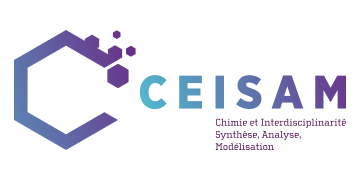
HICARE - Heterovalent Inhibitors of CARbohydrate-processing Enzymes (Sialidases)
HICARE is a project supported by Sébastien GOUIN (coordinator) based on an unprecedented approach for reaching high affinities and selectivities for sialidase enzymes expressed by bacteria and parasites. Many sialidases of biological interest possess carbohydrate-binding modules (CBM) in close proximity of the catalytic site (CAT). They functions as anchoring points to the targeted glycans, increasing the catalytic efficiency of the system. The aim of HICARE is to develop multivalent inhibitors targeting both the CAT and CBM modules.
Project summary
Synthetic inhibitors of viral sialidases (SA) were particularly developed and this was rewarded in the field of anti-influenza drugs by the licensing of zanamivir (Relenza®) by GlaxoSmithKline and oseltamivir (Tamiflu®) by Hoffman-La Roche. These two last examples validates the potential importance of targeting SA for the development of new anti-infective agents. Zanamivir and oseltamivir are nanomolar inhibitors of influenza SA but are poor inhibitors of SA from bacteria and parasites, for which literature only reports molecules active in the micromolar range for the best cases. There is therefore plenty of room for the development of more potent and selective inhibitors of parasitic and bacterial SAs. The aim of this project is based on an unprecedented approach, alternative to the “lock and key”, for reaching high affinities and selectivities for carbohydrate-processing-enzymes. Several glycosidases and glycosyl-transferases of biological interest possess carbohydrate-binding modules (CBM), lectin-like domains (LD) or secondary-subsites (SSB) for carbohydrates in close proximity of the catalytic sites. They functions as anchoring points to the targeted glycans, increasing the catalytic efficiency of the system. We design a new family of SA inhibitors able to interact in these catalytic and lectinic(s) site(s), simultaneously. The homo and heterovalent inhibitors of carbohydrate-processing enzymes (HICARE) designed should considerably increase the affinity and selectivity for the targeted SA through multivalent and avidity effects. As far as we know, this concept of heterovalent targeting has never been applied to parasitic or microbial SA.
